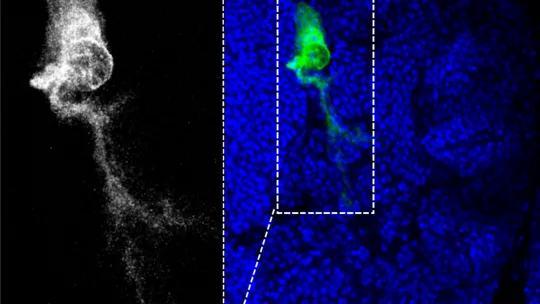Images
- Researchers at IRB Barcelona and the Institut Curie describe a new phenomenon of functional instability called “Illuminati”.
- Published in the scientific journal Development, this is an epigenetic phenomenon that plays a role in the inactivation of certain genes.
The preservation of genome integrity is essential for the proper functioning of organisms and to guarantee offspring and survival of the species. Therefore, there are various cellular mechanisms that prevent mutations and chromosomal abnormalities. However, failure of any of these mechanisms can lead to genomic instability, which is associated with a wide variety of diseases, such as ataxia telangiectasia, xeroderma pigmentosum, and cancer.
Scientists led by Dr. Cayetano González, ICREA researcher at IRB Barcelona, and Dr. Renata Basto, group leader at the Institut Curie in France, have found a new form of instability, which is not genomic but functional, that they have called “ Illuminati”. This form of instability does not take place in the DNA sequence, or the structure, number, or function of chromosomes, but rather acts at the epigenetic level. The researchers have observed this phenomenon in neural (nervous system) stem cells in the brain of the Drosophila fly.
“Illuminati is unlike other epigenetic mechanisms of gene inactivation known to date in Drosophila and it is sensitive to environmental conditions such as diet and temperature. In particular, Illuminati is highly potentiated in malignant tumours that originate from Drosophila neural stem cells”, explains Dr. González.
Drosophila as a model to study genomic instability and disease
The Cell Division laboratory at IRB Barcelona uses the Drosophila fly as an experimental model to study the causes and effects of genomic instability. One of the tools they have developed consists of flies with markers designed in such a way that a fluorescent signal is turned on only in cells in which the integrity of the genome is compromised. The key to this system is a protein called Gal80, so mutations in the gene that encodes this protein (or the loss of the chromosome that carries this gene) act as molecular triggers that lead to the expression of a fluorescent protein.
This technique, which is highly sensitive since it can detect genomic instability in a single cell within an entire organism, has allowed the discovery of this new epigenetic regulation mechanism.
Among other projects, the group is currently using this study model to examine the contribution of genomic instability to tumour growth, and the differences in genomic instability between the sexes.
This study has been supported by the European Research Council (ERC), the Spanish Ministry of Science and Innovation, the European Regional Development Fund (ERDF), and the French National Centre for Scientific Research (CNRS).
Related article:
Illuminati: a form of gene expression plasticity in Drosophila neural stem cells
Alix Goupil, Jan Peter Heinen, Riham Salame, Fabrizio Rossi, Jose Reina, Carole Pennetier, Anthony Simon, Patricia Skorski, Anxela Louzao, Allison J. Bardin, Renata Basto and Cayetano Gonzalez
Development (2022) DOI: 10.1242/dev.200808
About IRB Barcelona
The Institute for Research in Biomedicine (IRB Barcelona) pursues a society free of disease. To this end, it conducts multidisciplinary research of excellence to cure cancer and other diseases linked to ageing. It establishes technology transfer agreements with the pharmaceutical industry and major hospitals to bring research results closer to society, and organises a range of science outreach activities to engage the public in an open dialogue. IRB Barcelona is an international centre that hosts 400 researchers and more than 30 nationalities. Recognised as a Severo Ochoa Centre of Excellence since 2011, IRB Barcelona is a CERCA centre and member of the Barcelona Institute of Science and Technology (BIST).









